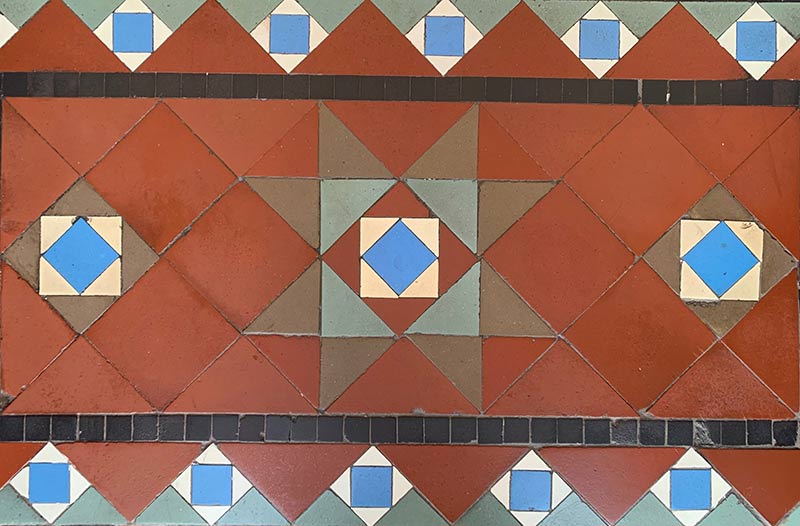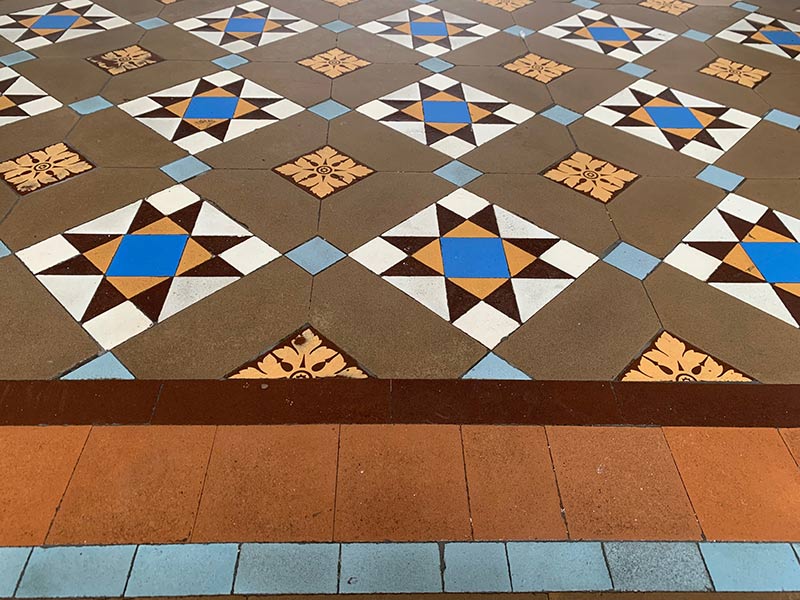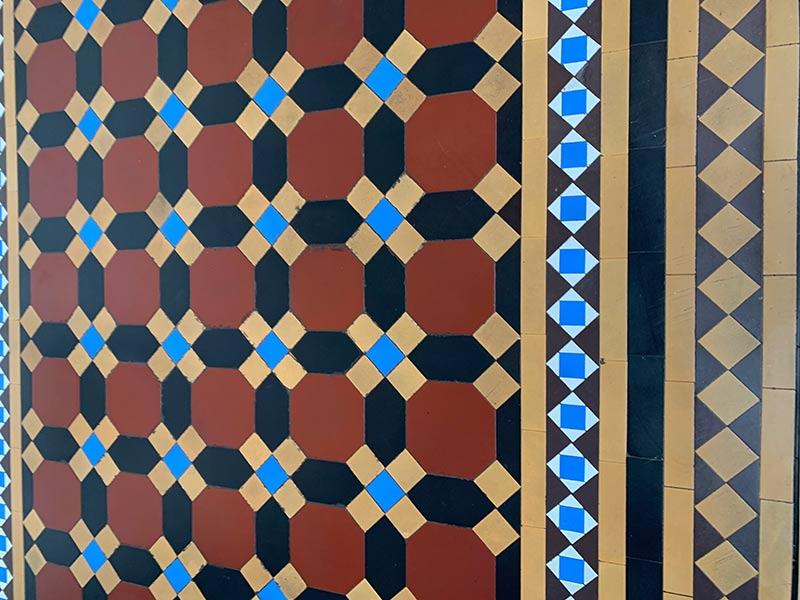How to seal Victorian floor tiles
BLOG
Victorian floor tiles require sealing as they are often very porous, the thin fire skin of the tile face can often wear under footfall, leaving the tile body open to absorbing dirt and contaminants.

To successfully seal a Victorian tile, floor the following steps should be undertaken first:
- Ensure the floor is clean of previous coatings, contaminants and surface applications.
- The tiles and screed substrate are dry.
- Any loose and damaged tiles should be re-fixed or replaced.
- Grout often gets overlooked, check it is sound and all tile joints are not open.
For a sealant to be successful the more homogeneous and clean the surface, the better the sealant will be absorbed and the more uniform it will look.

There’s a bewildering array of waxes, sealants and protective coatings available with some really effective products out their but also some inapropriate treatments.
Any topical sealant should be avoided. If it sits in the surface then its going to wear off.
So acrylic and polyurethane coatings should not be applied. We spend a lot of time removing previously applied topical surface coatings to Victorian floors.
Linseed oil is a historically used method of surface treatment, but it yellows and oxidises over time, also it has a sticky and gloopy consistency even years after application.
Linseed oil was applied and stripped during the late Victorian and Edwardian eras, on a weekly basis when domestics and labour were cheap.
So, while looks nice initially would require a lot of upkeep and work. That said linseed oil is vapour permeable so it lets your floor tile breath.
Waxes are similar to linseed oil surface treatments on Victorian geometric and encaustics floor tiles. It looks lovely initially then attracts dirt over time. Again, a successful wax application to a Victorian tile floor needs regular maintenance.
Wax is not vapour permeable, so can trap moisture leading to salt efflorescence problems and in worst case scenario the lifting of tiles.
Victorian Tile Restoration use vapour permeable absorbent surface applications, there’s some choice in the market but basically you get what you pay for. Be prepared to invest some money in the application substance, the acrylic sealants available are really cheap and nasty so that should be a good indicator of what a contractor’s skill levels is if they are offering a cheap price with these sorts of finishes.
One of the issues with absorbant sealants Is that they are permanent if they are absorbed in-to the clay pores of the tiles, so they are not really suitable for historically sensitive or old pre Victorian tile schemes.



